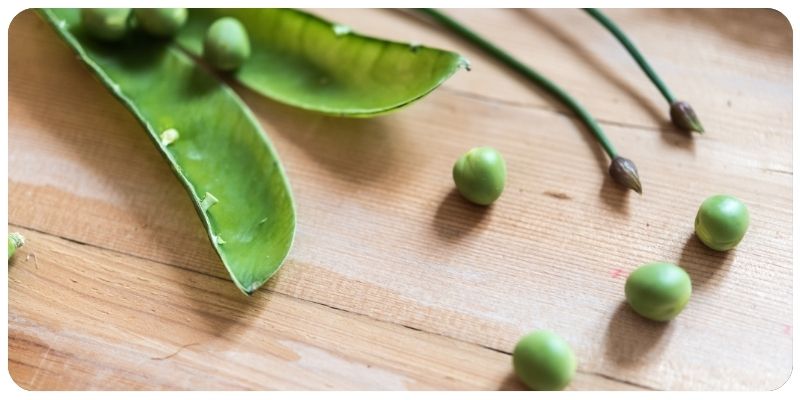
A Simple Guide: How to Grow Snow Peas in Your Kitchen
Snow peas are a delicious and nutritious addition to any kitchen garden. They are easy to grow indoors, making them a perfect choice for gardeners with limited space or those who want fresh produce year-round. In this simple guide, we will walk you through the steps to grow snow peas in your kitchen, from planting to harvesting.
1. Why Grow Snow Peas Indoors?
Snow peas are one of the easiest crops to grow indoors. They are a cool-season vegetable, meaning they thrive in cooler environments, which makes them perfect for indoor gardening. Growing snow peas in your kitchen ensures that you always have fresh peas on hand for your salads, stir-fries, and other dishes.
2. Choosing the Right Variety of Snow Peas
Before you start growing snow peas indoors, it's important to choose the right variety. Some varieties are better suited for indoor growth than others. Look for compact, dwarf varieties that don’t need extensive support structures. Popular indoor-friendly snow pea varieties include:
- Oregon Sugar Pod II: A compact, high-yield variety that does well in containers.
- Dwarf Grey Sugar: Known for its sweet, tender pods and small growth habit.
- Cascadia: A semi-dwarf variety that is resistant to disease and produces early harvests.
3. Choosing the Right Container
Snow peas can be grown in containers, but they need enough room for their roots to spread and develop. Choose a container that is at least 6-8 inches deep and has good drainage. You can also use long, shallow containers if you plan to grow multiple plants.
Container Tips
- Ensure Proper Drainage: Snow peas don’t like waterlogged soil, so choose a container with drainage holes.
- Choose a Lightweight Container: If you plan to move your peas to catch sunlight, select lightweight containers that are easy to lift and reposition.
- Use a Support System: Although snow peas are smaller indoors, they may still benefit from a simple trellis or stake to climb.
4. Soil and Planting
Snow peas thrive in well-draining, nutrient-rich soil. Choose an organic potting mix or create your own by mixing equal parts compost, perlite, and garden soil. Plant snow peas directly in the soil, as they don't transplant well.
Planting Steps
- Soak Seeds: Soak your snow pea seeds in water for 8-12 hours before planting to encourage faster germination.
- Planting Depth: Plant the seeds about 1 inch deep in the soil, spaced 2-3 inches apart.
- Lightly Cover: Cover the seeds with soil and gently press down. Water lightly to moisten the soil.
5. Light and Temperature Requirements
Snow peas need plenty of sunlight to thrive. Ideally, they should receive 6-8 hours of sunlight per day. If your kitchen doesn’t get enough natural light, you can supplement with grow lights.
Optimal Conditions
- Sunlight: Place the containers near a south-facing window to maximize sunlight exposure. If sunlight is limited, use grow lights for 12-14 hours per day.
- Temperature: Snow peas prefer cooler temperatures between 60°F and 70°F (16°C to 21°C). Avoid placing them in areas with high heat, like next to stoves or heating vents.
6. Watering and Care
Water your snow peas regularly but avoid overwatering. Keep the soil moist but not soggy. Snow peas are relatively low-maintenance, but they do benefit from occasional feeding with a balanced, organic fertilizer.
Care Tips
- Watering: Check the soil moisture level daily and water when the top inch feels dry. Be careful not to let the soil dry out completely.
- Fertilizing: Fertilize once a month with a balanced fertilizer. Avoid over-fertilizing as it can lead to excessive leaf growth and fewer pea pods.
- Pruning: If the plants become too leggy, pinch back the tips to encourage bushier growth.
7. Harvesting Snow Peas
Snow peas are usually ready to harvest about 60 days after planting. The key is to harvest them when the pods are young, tender, and before the peas inside fully develop.
Harvesting Tips
- Harvest Regularly: Check the plants daily during the harvest season. Regular harvesting encourages the plant to produce more pods.
- Use Scissors: Use scissors or garden shears to cut the pods from the plant to avoid damaging the stems.
- Eat Fresh: Snow peas taste best when eaten fresh, straight from the vine. They can also be stored in the refrigerator for up to a week.
Conclusion
Growing snow peas in your kitchen is an easy and rewarding way to bring fresh produce into your home. By following these simple steps, you can enjoy a continuous supply of tender snow peas for your favorite dishes. Whether you're a beginner or an experienced gardener, snow peas are a great addition to any indoor garden.